Home / How Does an Internal Door Handle Work?
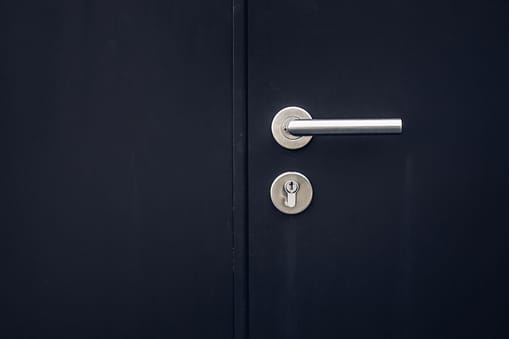 Sometimes the things we use every day are the most mysterious to us. This is definitely the case with door handles! We’re often totally unaware of the working mechanisms within these simple household objects – and you’ll be surprised to know that such a simple-looking object has quite a complex interior.
Sometimes the things we use every day are the most mysterious to us. This is definitely the case with door handles! We’re often totally unaware of the working mechanisms within these simple household objects – and you’ll be surprised to know that such a simple-looking object has quite a complex interior.
It can be beneficial to understand how internal door handles work as it could be the difference between fixing an issue yourself or calling a professional in. If you want to save money, then you’re in the right place!
In this article, we’ll go over the various parts of a door handle, how the internal door handle mechanism works, and a few more important notes about door handles. We’ll also discuss the differences between the handles for interior doors and exterior doors.
First, we’ll begin with exploring the different parts of a door handle, and what their purpose is.
Understanding the different parts of a door handle is the first step to learning how a door handle works. From the door lock to the strike plates to the sliding bolt, we’ll explore the inner workings of the handles for your internal doors.
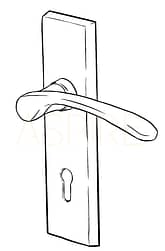
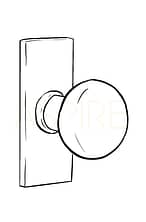
We’re all intimately familiar with this part – the one that we use every day! This part of the door handle has a turn and release mechanism that pulls the latch bolt out of the door frame, allowing the door to open.
There are two basic types of this part of the door: door knobs, and door levers. Door knobs differ from levers in the sense that they have circular heads. Where door levers are pushed up or down to open the door and are usually connected to a backplate, though occasionally you can find a lever on a rose (as seen with some of Aspire Door’s handles)
What about door locks? Most internal door handles will not come with a locking mechanism installed, unless the handle is being installed on a bathroom door, which, for obvious reasons, will usually come with a lock.
Bathroom locks are usually operated from the inside and are usually not as large as the locks used on an exterior door – usually called mortice locks.

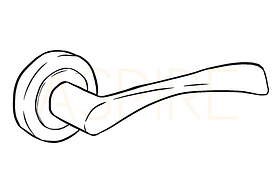
An additional exterior part of a door handle, the backplate or rose is the part that the handle is connected to. It is often either a circular
shape (rose) or a vertical oblong or rectangular shape (backplate). This part of the door handle can be unscrewed to take apart the mechanism.
Both a back-plated door handle and a concealed rose won’t show any screws. Though you’ll usually find that a standard rose door handle will have two-three screws holding the rose to the door.
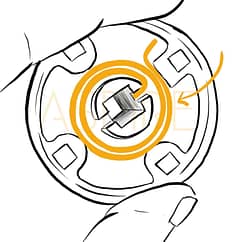
The inside can be separated into three parts:
A door knob works in a relatively simple way, once we understand the basic parts.
Once one of the door knobs is turned, the spindle rotates along with the handle. The spindle then rotates the spindle hole on the latch mechanism, pulling the latch bolt out of the door frame. When the handle is released, the spring then pushes the handle back into its starting position, automatically rotating the spindle and pushingthe latch back out.
Push the door shut, and the latch will move into the mechanism. The spring then pushes the latch back out of the latch mechanism, and past the strike plate into the recess in the door frame.
A bathroom door handle is slightly different from other internal door handles. This is because bathrooms typically need a little more privacy than your standard room. The bathroom door handles will typically include an internal door lock. The bathroom lock can only usually be opened from outside the bathroom using a special key or screw on the outer door knob.
While we’re on the subject of lockable doors, we can explore how exactly a door lock works. The locking mechanism for a bathroom can vary slightly.
The most common lock is the thumb-turn lock. This locking mechanism is separate from the door handles and includes a second bolt latch that can be turned into the door frame by rotating a small knob that rotates its own spindle, pushing a bolt latch into the door frame.

This door handle features a lever that is mounted to a long backplate. The backplate may or may not include a lock.

A lever door handle on a rose is a more modern take on the traditional backplate design. These handles feature a lever that is mounted on a rose, which can be either round or square. These are much smaller than backplates and usually don’t come with locks. It provides a more minimalist look that is ideal for modern homes.
At Aspire Doors, we offer lever on rose door handles in a variety of styles. Take a look now

Door knobs are circular rather than lever-shaped. Some door knobs will come fitted with locks in the form of a button or small knob on the handle. They can usually be rotated both ways, though may not provide as much grip or accessibility as a door lever will.
D Pull: Often found on public doors, these are a great alternative to latches and are fitted to open inwards. These doors won’t typically lock on the handle, but can usually be seen with a shoot bolt installed as an alternative locking mechanism.
Thumb Turn Handles: These handles are usually used in public toilets, the thumb turn handle closes the door by rotating the thumb knob, which pushes the latch into the door frame, locking the door immediately.
Internal and external door handles are designed to suit their specific purposes. An external door handle’s primary focus should be security and often includes locks that secure the door in place and keep intruders out. Because of this, they’re usually built with durability in mind – to prevent break-ins and allow the handle to withstand the elements. While an internal door handle is used to separate different rooms of a house internally and usually doesn’t require secure locks.
Learn more about door locks, handles, and more by checking out our other articles:
You’ll need to trim mm off the left & right of each door
You’ll need to pack mm either side of the frame
You’ll need to trim mm off the top and bottom of each door
You’ll need to pack mm above
You’ll need to trim mm off the left & right of each door
You’ll need to pack mm either side of the frame
You’ll need to trim mm off the top and bottom of each door
You’ll need to pack mm above
You’ll need to trim mm off the left & right of each door
You’ll need to pack mm either side of the frame
You’ll need to trim mm off the top and bottom of each door
You’ll need to pack mm above